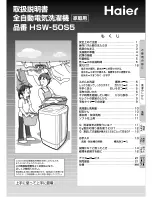
Any electrical and/or plumbing work required to install
this appliance should be carried out by a qualified
electrician and/or plumber or competent person.
Remove all packaging before positioning the machine.
If possible, position the machine next to a water tap and a
drain.
Fitting under a counter
(kitchen worktop or sink)
By removing the machine’s worktop, you can install it under a
close fitting sink unit or a pre-existing top, providing the
dimensions of the recess correspond to those shown in the
picture.
Proceed as follows:
Remove the machine’s worktop by unscrewing the two front
retaining screws, pull from the front and slide out the rear
slots, lifting the worktop.
Insert the machine after adjusting height and levelling with the
adjustable feet. When inserting the machine, ensure that the
water inlet and drain hoses are not kinked or squashed.
If the dishwasher is later used as a free-standing appliance,
the original worktop must be re-mounted.
The plinth on free-standing appliances is not adjustable.
Levelling
Good levelling is essential for correct closure and sealing of
the door.
When the appliance is correctly levelled, the door will not catch
on the levelling spacers on either side of the cabinet.
If the door does not close correctly, loosen or tighten the
adjustable feet until the machine is perfectly level.
Water supply connections
This dishwasher may be fed with either hot (max. 60°) or cold
water. Nevertheless we advise you a cold water supply.
A hot water supply is not always efficient with very soiled
crockery as it shortens the washing programmes a lot.
The dishwasher must not be connected to open hot water
appliances or instantaneous water heaters.
The dishwasher is fitted with safety devices that prevent the
wash water returning into the drinking water system and
comply with the applicable plumbing regulations.
The water pressure must be within the limits given in the
technical specifications. Your local Water Authority will advise
you on the average mains pressure in your area.
The dishwasher features fill and drain hoses which can be
turned either to the left or the right to suit the installation. The
locknut must be correctly fitted to avoid water leaks.
The water inlet hose must not be kinked, crushed, or entangled
when it is being connected up.
Do not use, for connection, old hoses which have been
used in another appliance.
If the machine is connected to new pipes or pipes which have
not been used for a long time, you should run the water for a
few minutes before connecting the inlet hose.
For making the connection itself, the coupling nut fitted to the
machine’s supply hose is designed to screw onto either a 3/4"
inch gas thread spout, or to a purpose made quick-coupling
tap such as the Press-block.
Installation instructions
820
570-600
450
IN04
13
If after all these checks, the problem persists, contact your
local consumer services department, quoting the model
(Mod.), product number (PNC) and serial number (S.N.).
This information can be found on the rating plate located on
the side of the dishwasher door (see picture).
So that you always have these numbers at hand, we
recommend you to make a note of them here:
Mod. : . . . . . . . . . . . . . . . . . .
PNC : . . . . . . . . . . . . . . . . . .
S.N. : . . . . . . . . . . . . . . . . . .
Service and spare parts
This product should be serviced by an authorised service
engineer, and only genuine spare parts should be used.
Under no circumstances should you attempt to repair the
machine yourself.
Repairs carried out by inexperienced persons may cause injury
or serious malfunctioning. Contact your local consumer
services department.
Always insist on genuine spare parts.
RA08


































